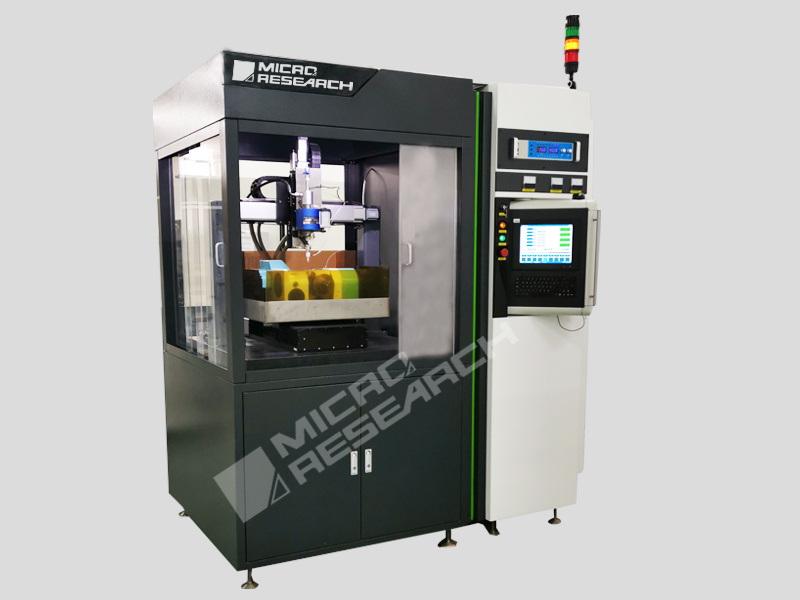The working principle of the moving head in electrical discharge machining (EDM) is based on the controlled erosion of material through electrical discharges. In EDM, a tool electrode and the workpiece are separated by a dielectric fluid, which acts as an insulator until a high voltage is applied. When the voltage exceeds a certain threshold, a spark is generated between the tool and the workpiece, creating a localized high-temperature plasma that melts and vaporizes the material at the point of contact. The moving head allows for precise control of the tool's position and movement, enabling intricate shapes and features to be machined into the workpiece. The head can move in multiple axes, allowing for complex geometries to be achieved. The process is highly accurate and is often used for machining hard materials and creating molds and dies.
Release time:
2021-07-12
The linear head of the electrical discharge machine uses an eccentric mechanism to convert the rotational motion of the servo motor into a linear motion trajectory through a maintaining mechanism. This allows each point on the electrode to perform a small circular motion in the horizontal plane around its original position, creating a surface formed by the envelope of many small circles. The radius of this motion is called the linear motion amount, which can be gradually adjusted from zero to compensate for the differences in spark discharge gaps during rough, medium, and fine machining of the electrical discharge machine, thus achieving the purpose of polishing the cavity. The radius of the motion trajectory of each point is referred to as the linear motion amount.

The working principle of the linear head in electrical discharge machining. In electrical discharge machining, there are rough, medium, and fine machining processes. Among these, the spark gap in rough machining is larger than that in medium machining, while the spark gap in medium machining is larger than that in fine machining.
When using an electrode for rough machining on an electrical discharge machine, after most of the excess material of the workpiece is eroded away, the surface roughness of the bottom surface and the surrounding side walls is very poor. To smooth it out, the standard must be changed and adjusted step by step. Since the discharge gap of the rear standard is smaller than that of the front standard, the bottom surface of the workpiece can be smoothed through spindle feed, but the surrounding side walls cannot be smoothed.
The linear head of the electrical discharge machine can compensate for this shortcoming. It is a process accessory that allows the electrode mounted on the linear head of the electrical discharge machine to produce an outward mechanical compensation action. When using a single electrode to process cavities in the electrical discharge machine, it can compensate for the difference in discharge gap between the previous and the next processing standards.
The linear head of the electrical discharge machine uses an eccentric mechanism to convert the rotational motion of the servo motor into a linear trajectory through the maintaining mechanism, allowing each point on the electrode to perform a small circular motion in the horizontal plane around its original position. The envelope of many small circles forms the processed surface. The radius of this motion is the linear amount, which can be gradually increased from zero through adjustment to compensate for the differences in spark discharge gaps during rough, medium, and fine machining, thus achieving the purpose of smoothing the cavity. The radius of the motion trajectory of each point is referred to as the linear amount.
Related News





